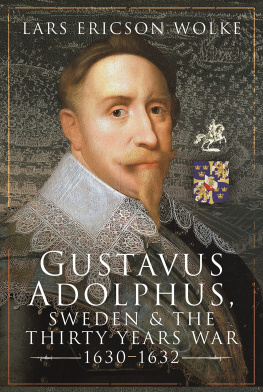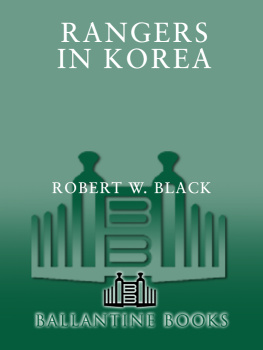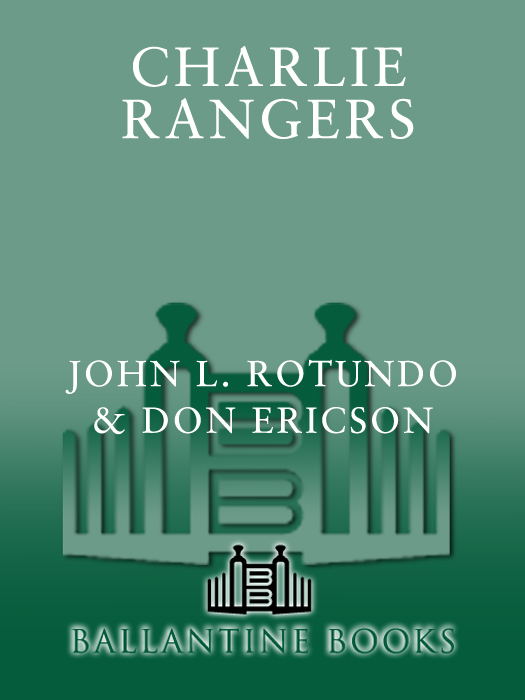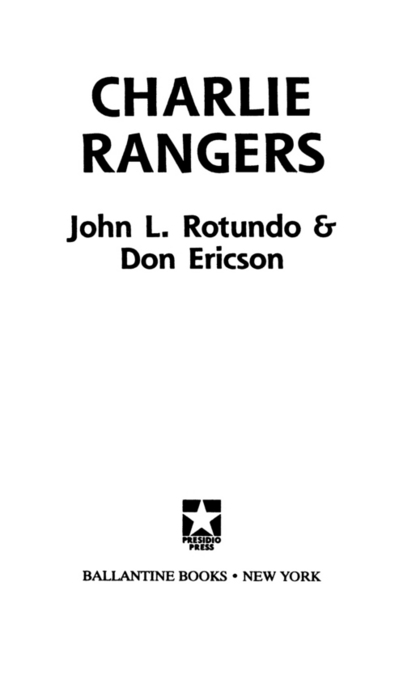Sam was on the radio getting a commo check when he saw the first movement. As he sat paralyzed, eyes glued to the trail, an NVA soldier walked through. The second one in sight was a huge Chinese soldier wearing a green beret. Then five more NVA came into view. Every eye in Team 3-1 was wide. Estimated enemy: thirteen, visual confirmation, Sam whispered into the phone. Do you copy? Over.
Affirmative, replied X-ray.
Before Sam could finish his report, the NVA were very close. Heart racing, Sam set the handset down and picked up the clackerthe claymore detonatorthen waited for the NVA point man to get within the kill range of the first mine. Then he squeezed the clacker.
A Presidio Press Book
Published by The Random House Publishing Group
Copyright 1989 by John L. Rotundo and Don Ericson
All rights reserved.
Published in the United States by Presidio Press, an imprint of The Random House Publishing Group, Inc., New York, and simultaneously in Canada by Random House of Canada Limited, Toronto.
Presidio Press and colophon are trademarks of Random House, Inc.
www.presidiopress.com
Library of Congress Catalog Card Number: 88-91240
eISBN: 978-0-307-76040-1
v3.1
To the thirty-five hundred or so Rangers, LRPs, SEALS, and Marine Force Recon, who served their country in Vietnam, volunteering for our kind of operations. Their numbers were small, their deeds spoke for themselves.
And to my wife Louisa, who through good times and bad, before, during, and after my war stories, was always there for me.
J OHN L. R OTUNDO
This book is dedicated to my comrade John Rotundo, whose friendship will ever remain special. And to the Rangers who made the ultimate sacrifice.
But most of all to Susan, my wife, my friend, and our typist, for her countless hours of typing and her patience in listening till the wee hours of the morning to repetitious, boring war stories. She was patient and never questioned me about my experiences in Vietnam because she knew I wasnt ready to share them with anyone.
D ON E RICSON
What about the emotion you feel when you kill someone who was trying to kill you, and you stand there, looking down at the guy, thinking, Im alive and hes nothing, and you feel great
K ENT A NDERSON
Table of Contents
Acknowledgments
JOHN L. ROTUNDO
To Anne Marie Bucceri, a personal friend, for keeping my letters down through the years which helped me place names and dates to make this book possible.
To Vera Rotundo, my mother, for saving all my letters from Vietnam, and for her support, both during and after my tour of duty.
And a special acknowledgment to co-author, Don Ericson, whose friendship or rather brotherhood has meant and will mean more to me than most people can ever realize.
DON ERICSON
We gratefully acknowledge the support and encouragement of Owen Lock, Editor-in-Chief, Del Rey Books. Its been a long two years. Your hand-holding is deeply appreciated and will be eternally remembered.
To Sam Agner, who restored many forgotten memories, I thank you. You were, and always will be, like a brother to me. The times we spent together in Charlie Rangers in Vietnam can never be relived, but they will never be forgotten.
To John Leppleman, whose recollection of the attempt to capture General Giap was much appreciated, and further clarified the mission of Charlie Company. John also compiled the list of Charlie Rangers found in the Appendix.
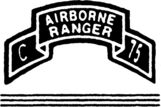
PROLOGUE
MEMORIAL DAY WEEKEND, 1986/WASHINGTON, D.C.
We drove our rental car down Constitution Avenue looking for a parking space as close to the wall as possible. A car was just pulling out, so John L. waited for it to clear, then pulled into the vacant spot.
As we crossed the street and neared the wall, an eerie feeling came over us: stenciled on the wall were 58,000 names, some of which would forever hold a place in our hearts.
Before long we came across a volunteer wearing a yellow baseball cap and carrying a book which listed all the names on the wall.
Im looking for Thorne, Kevin Thorne, John L. told the volunteer.
She opened her book immediately. Ive got a Kevin G. Thorne, she said, February twenty-seventh, 1971.
John L. looked at Don for a moment, then said, It was the twenty-eighth; maybe they record the day of death as it was back here in the World. He looked back at the volunteer. Thats him. Where do we find him?
The volunteers fingers followed the name and said, Four west, line ten. Follow me and Ill show you. We walked past the sea of people to the fourth panel left of center. Count down ten lines from the top and he should be listed on that line. A rush of emotion swept over us as our eyes scanned the line. Sure enough, at the extreme right of the panel was the name.
Hi, Thorney, John L. whispered, mostly to himself.
Don turned to the volunteer again and said, Now wed like to find William Murphy and a soldier named Rucker.
The volunteer thumbed through her book. I found William Murphy, but I cant find Rucker. I need his first name or the exact date of death, she said.
Don couldnt remember Ruckers first name or the exact date of death, so the volunteer began to show us where Murphy was located. We walked along the wall anxiously looking for Murph. Dons heart was pounding when he saw William Murphy etched in granite. He stared morosely, memories of Murph flooding his heart.
John L. took out his camera and lifted it overhead to get as close to the names as possible before taking the picture. He had always had the impression that the names were all within easy viewing distance, but being this close to the center took him by surprise how high from the ground it was.
We spent the next hour touring the wall, looking at pictures left by loved ones, and the letters written by family and friends to those names listed on the wall.
Our next stop was the statue of the three grunts. We were struck by the lifelike look of the eyes on the statue. There was quite a bit of conversation around the statue, people posing with one another.
To the west of the wall were benches, and that area seemed a meeting place for ex-GIs. Here also, a lot of conversation was going on as people met one another for the first time in fifteen or twenty years. It was quite unlike the atmosphere one found in front of the wall, where the only sounds heard were hushed whispers and occasional crying as somebody found the name of a loved one or a departed friend.
Hoping to see a familiar face from the past, we sat on the benches watching the hundreds of people pass by. Don noted that almost every other person walking by was dressed in camouflage fatigues, uniforms worn in Vietnam only by the elite forces. At the wall, thats about all anyone wore.
As is normal for combat veterans, we looked for the patch on the shoulder that would tell of the wearers unit. We looked for jump wings, and the combat infantrymans badge (CIB) that signified the wearer has seen combat. But by and large, we saw neither. Most of those we saw wore large patches reading




